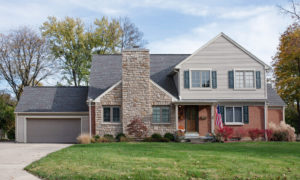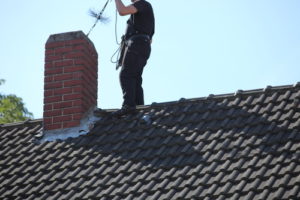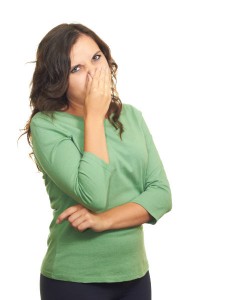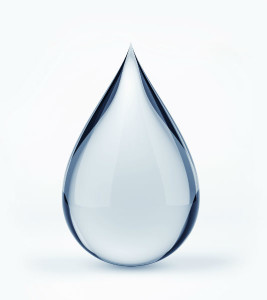Is Your Chimney Ready for Burn Season?
Do you know for certain that when you light your fireplace this fall, it will burn safely? Are you sure your family will be safe from carbon monoxide danger and other hazards? If you haven’t had your fireplace and chimney system cleaned or inspected before the burn season, the answer is no. It is unsafe to light a fire in a system that has not been serviced in the last twelve months.
Inspections and Sweeps for Safety
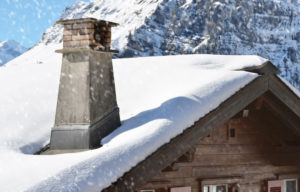 Both the Nation Fire Protection Association (NFPA) and the Chimney Safety Institute of America (CSIA) encourage homeowners to schedule routine chimney sweeps and annual chimney inspections to insure the chimney system is at its safest and most efficient possible. These two organizations make it a mission to bring down the frequency of residential fires by preventing them. That’s right—most fires can be prevented, especially those caused by heat appliances like your fireplace and chimney system.
Both the Nation Fire Protection Association (NFPA) and the Chimney Safety Institute of America (CSIA) encourage homeowners to schedule routine chimney sweeps and annual chimney inspections to insure the chimney system is at its safest and most efficient possible. These two organizations make it a mission to bring down the frequency of residential fires by preventing them. That’s right—most fires can be prevented, especially those caused by heat appliances like your fireplace and chimney system.
Your Chimney Sweep Explained
Your chimney sweep may be the most important service you schedule for your chimney system this year and every year. The sweep is the time that a professional gets a look at your system, cleaning it from top to bottom. During a standard chimney sweep, your technician will use drop cloths to protect your furniture and flooring and keep the mess contained with a high-powered industrial vacuuming system. We reach the flue interior with rods and brushes to clean away soot and creosote without damaging the liner.
Maintaining a clean fireplace and chimney system will keep the parts working correctly, air flowing optimally, and cut down on future problems and damages. Additionally, when you schedule a standard chimney sweep with Chief Chimney Services, a basic level one inspection is included!
Your Chimney Inspection Explained
For generations, homeowners have simply peered up the chimney flue with a mirror to check for obstructions. This is a fine way to look for obstructions, but it doesn’t check for anything else! The worst things that can happen to your chimney system are hidden from an untrained eye. When you schedule a chimney inspection with a licensed and certified company, such as Chief Chimney Services, you can rest assured that your entire system has been assessed and that any hazards present have been reported.
The average homeowner won’t recognize a hazard or other problem with the system until the signs are obvious—this means serious damage has likely occurred behind the scenes. For instance, you might not notice a chimney leak until there is water dripping down your masonry or a leak in the ceiling when the leak has been damaging your masonry from the inside out! A certified chimney sweep, by comparison, knows exactly where to look when inspecting a chimney. We check the whole system over from top to bottom, paying close attention to common culprits, and even use top-of-the-line video surveillance equipment to get an up-close look of interior parts.
Safe Chimneys in Suffolk County
For homeowners in and around Suffolk County, Long Island, there is no reason to light an unsafe fire this season. The team of CSIA Certified Chimney Sweeps (CCS) offers comprehensive chimney care and maintenance to the area year-round. You can schedule a chimney sweep or level one, two, or three inspections before you light your fire this fall and ensure your system is safe and ready to use for the whole burn season.
What to Schedule Before Burn Season
- If your chimney system hasn’t undergone any changes, problems, or storms that resulted in damage, you can get by with a level one inspection. This is a general assessment of all readily accessible portions of the system including the interior and the exterior masonry above the roof.
- If you have changed anything about your fire appliance or chimney system, you need to schedule a level two inspection. This level of inspection is also necessary when the home has experienced significant seismic activity, fire, or tropical storms and tornados and before the sale or transfer of property.
- A level three inspection is only recommended when a hazard is suspected during a lesser level inspection and will likely result in a repair. You won’t schedule this level of inspection unless your chimney sweep recommends it, but if they do, it is vital that it’s completed and repairs are made BEFORE lighting a fire in the fireplace, insert, or stove.
- If you didn’t schedule a chimney sweep after the last burn season, it is a good idea to have it done before burning fire this fall. A chimney sweep will clear away in debris left behind from last winter, will check for obstructions and animals, identify damage and hazards, and cut down on odors and inefficiencies.
When you’re ready to schedule services for your fire appliance or chimney system, look no further than your friends at Chief Chimney Services. Call or make an appointment online today.

